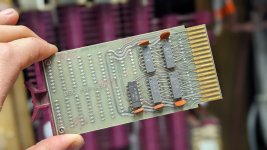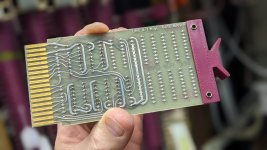pahp
Experienced Member
I'm not sure if you know this, @DougIngraham , but my former student Julian is working on a "nonvolatile 24k on a card" flip chip that, with some daughter cards and ribbon cables) plugs into the interface to the external 24k cabinet. So, once that's working, any 8k PDP-12 will be able to easily jump up to the full 32k. He's made one version that worked in some sense but had some showstopping bugs that he's working out.It would be difficult (very or extremely might be good to add before difficult) to add to an older machine like a PDP-12.



